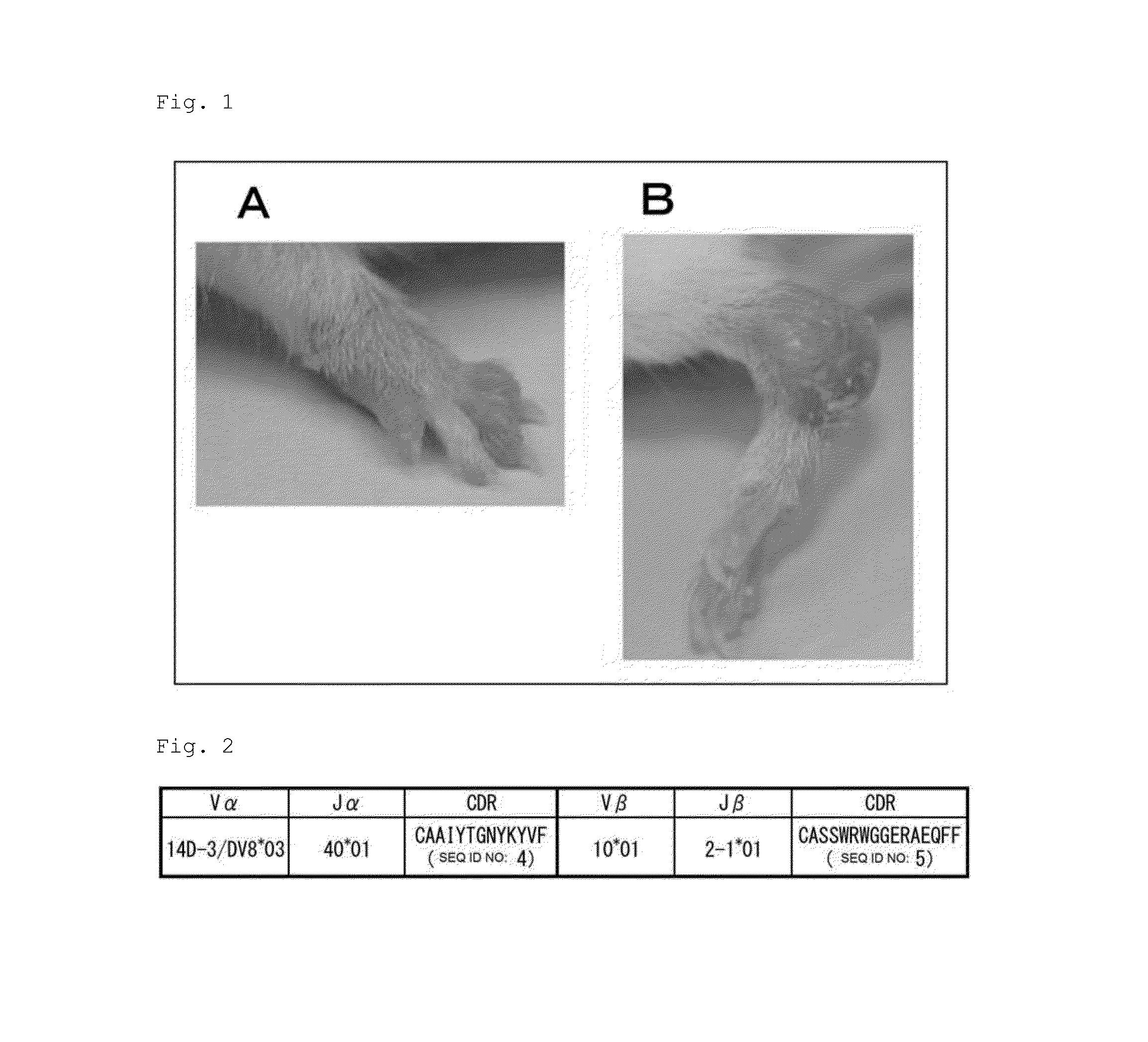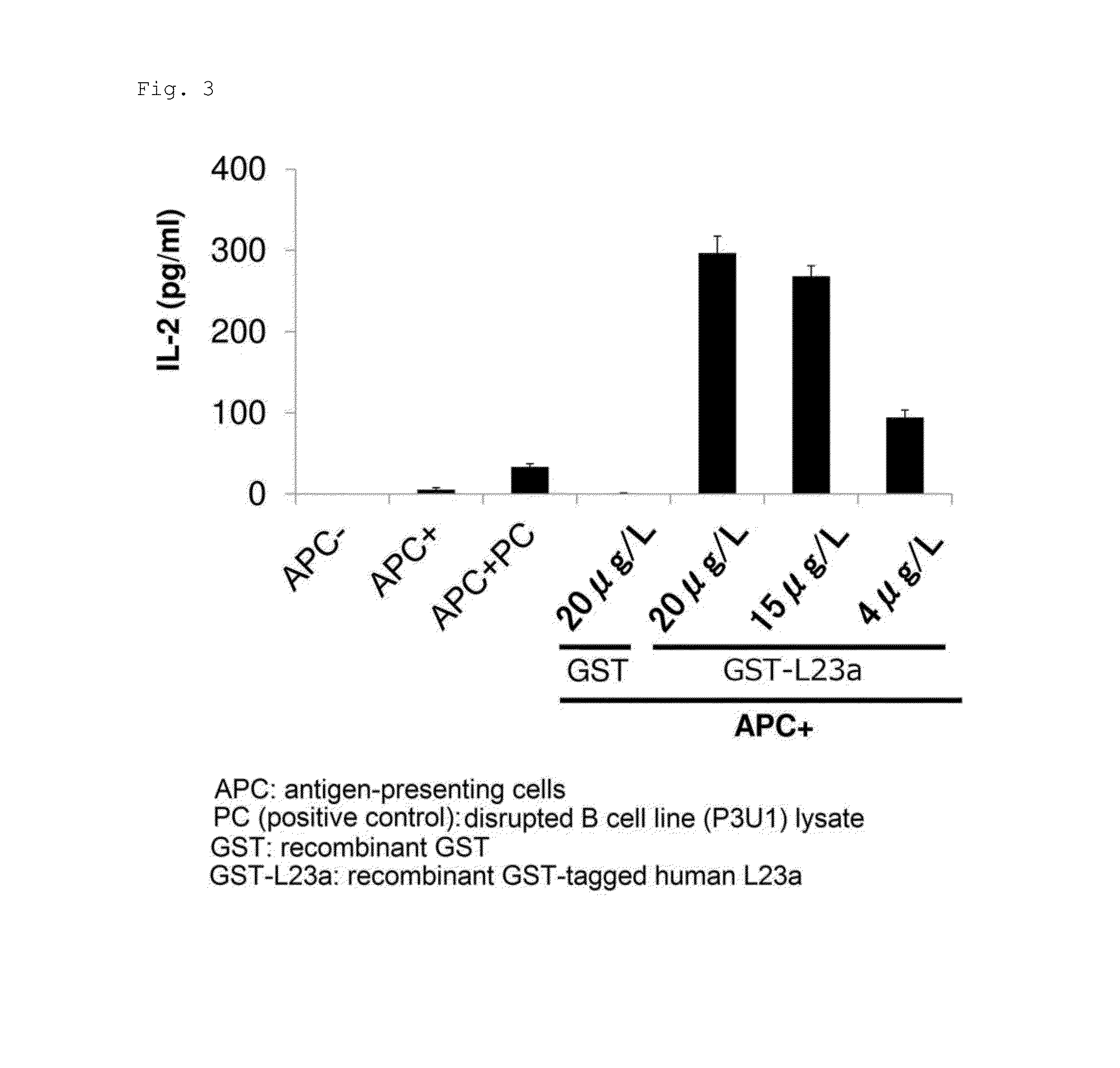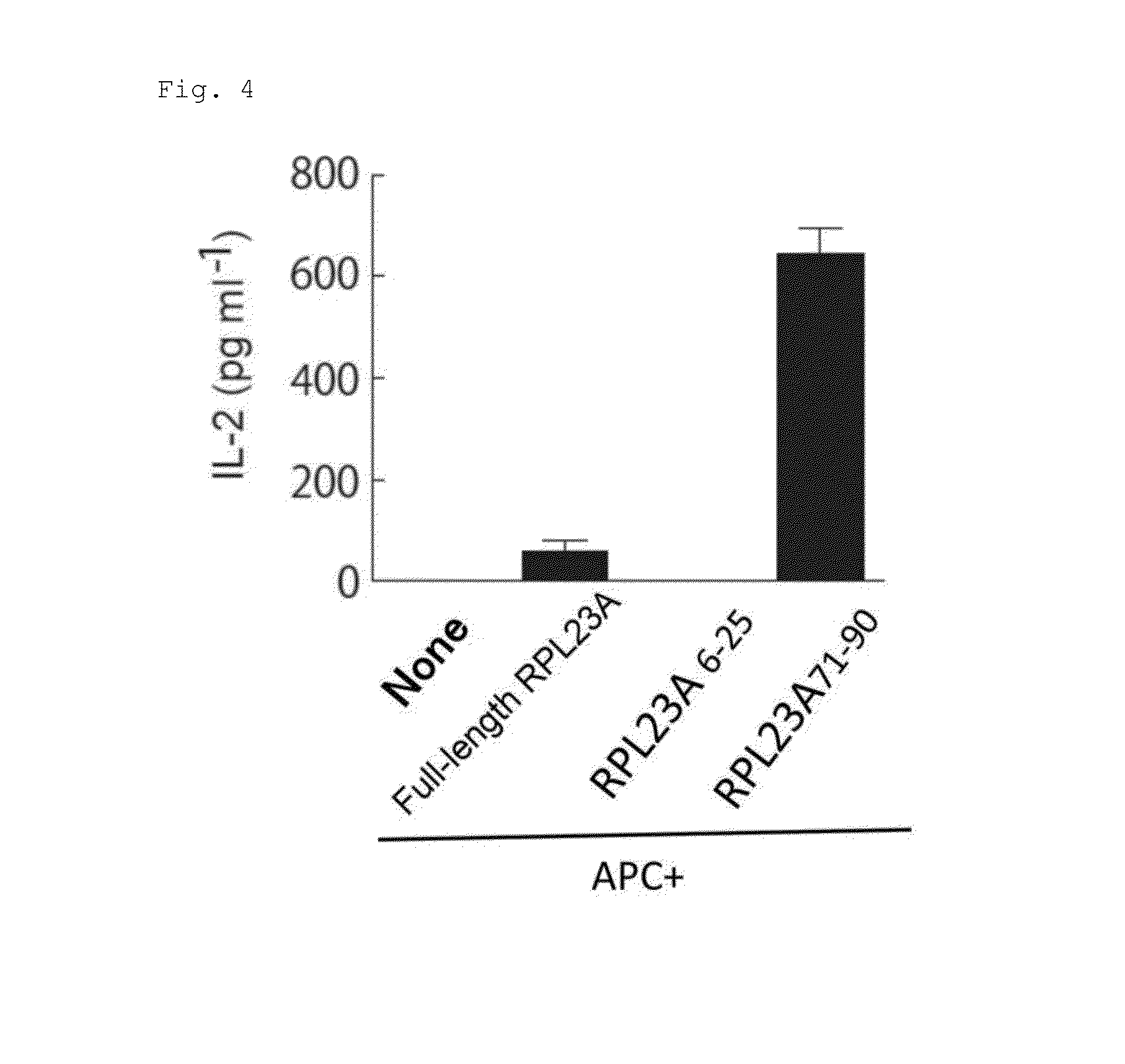Methods for identifying autoimmune arthritis and for screening for inhibitor of activation of autoimmune arthritogenic t cells
- Summary
- Abstract
- Description
- Claims
- Application Information
AI Technical Summary
Benefits of technology
Problems solved by technology
Method used
Image
Examples
examples
[0060]The present invention will be described in more detail below with reference to Examples, but the present invention is not limited thereto.
Cloning of T Cell Receptors (TCRs) of Arthritis-Inducing T Cells
[0061]The inventors created eFOX mice with knock-in of a fusion gene encoding a fusion protein of EGFP and the regulatory T cell-specific transcription factor Foxp3. The regulatory T cells of eFOX mice are readily detectable by the EGFP signals. eFOX mice were crossed to SKG mice, the autoimmune arthritis mouse model, to generate eFOX SKG mice. The mice were maintained in the SPF environment. eFOX SKG mice spontaneously developed arthritis after about three months of breeding.
[0062]Effector CD4+ T cells were isolated from the joint sites of eFOX SKG mice that developed arthritis. Briefly, the synovial tissue was removed from the ankle joints and dissociated in RPMI 1640 containing Liberase™ (Roche) at 37° C. for 1 hour. The tissue was passed through a nylon mesh to prepare a sin...
PUM
| Property | Measurement | Unit |
|---|---|---|
| Level | aaaaa | aaaaa |
Abstract
Description
Claims
Application Information
 Login to View More
Login to View More - R&D
- Intellectual Property
- Life Sciences
- Materials
- Tech Scout
- Unparalleled Data Quality
- Higher Quality Content
- 60% Fewer Hallucinations
Browse by: Latest US Patents, China's latest patents, Technical Efficacy Thesaurus, Application Domain, Technology Topic, Popular Technical Reports.
© 2025 PatSnap. All rights reserved.Legal|Privacy policy|Modern Slavery Act Transparency Statement|Sitemap|About US| Contact US: help@patsnap.com



